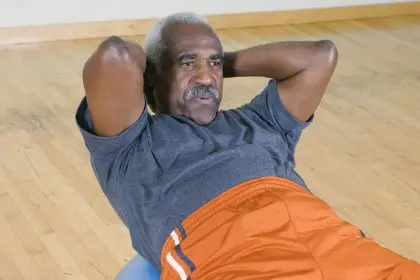Understanding the true scope of brain trauma reveals why everyone faces risk
The surprising prevalence of brain injuries
Brain injuries affect far more people than most realize, with approximately 2.8 million Americans sustaining traumatic brain injuries (TBIs) annually. This figure represents only those who seek medical attention, suggesting the actual number may be substantially higher when including unreported cases. This prevalence translates to roughly one person experiencing a brain injury every 15 seconds in the United States alone, creating a public health concern of remarkable proportions that receives surprisingly little attention compared to other medical conditions with similar impact.
The scope extends beyond just traumatic injuries to include acquired brain injuries from strokes, infections, and oxygen deprivation, adding millions more to the affected population. Stroke alone affects approximately 795,000 Americans yearly, with many survivors experiencing lasting cognitive effects. When combined with anoxic brain injuries from near-drownings, cardiac arrests, and other oxygen-depriving events, the total number of Americans living with brain injury effects exceeds 5.3 million – equivalent to the entire population of Colorado.
Mild traumatic brain injuries, commonly called concussions, represent the most frequently overlooked category. Studies indicate that between 1.6 and 3.8 million sports-related concussions occur annually, with up to 50% going unreported. This massive under-reporting stems from several factors: many affected individuals never seek medical care, healthcare providers sometimes miss the diagnosis, and injury tracking systems capture only a fraction of actual cases. The resulting data gap creates a significant underestimation of the true public health burden.
The cumulative effect of multiple mild injuries creates another hidden dimension to this issue. Research indicates that even mild concussions, when experienced repeatedly, can cause cumulative damage with effects potentially more severe than a single more serious injury. This cumulative impact remains particularly concerning in sports like football, soccer, and hockey, where participants may experience numerous subconcussive impacts that individually fall below diagnostic thresholds but collectively create significant neurological effects over time.
How everyday activities create unexpected risks
Falls represent the leading cause of traumatic brain injuries across all age groups, accounting for nearly half of all TBI-related hospitalizations. While most people associate falling risks primarily with older adults, data reveals a more complex picture. Children under 14 and adults over 65 face the highest fall-related brain injury risks, creating a U-shaped distribution across the lifespan. The home environment, often perceived as safest, actually serves as the setting for a substantial percentage of these injuries.
Recreational activities contribute significantly to brain injury statistics, with cycling leading as the sport most commonly associated with TBI emergency department visits. Approximately 85,000 cycling-related head injuries occur annually, far exceeding football (in absolute numbers) despite football receiving more media attention for concussion risks. Other common recreational sources include playground activities (29,000 TBIs annually), skateboarding, horseback riding, and snow sports – activities many people engage in without recognizing the potential brain injury risk.
Vehicle-related brain trauma extends well beyond just car accidents. While motor vehicle crashes account for approximately 14% of all TBIs, the risk landscape includes motorcycles, bicycles, pedestrian impacts, and increasingly, electric scooters and similar personal transportation devices. The expansion of rideshare scooters in urban environments has created a new injury pattern, with studies finding helmet use rates below 5% among riders despite considerable head injury risk during falls or collisions.
Workplace brain injuries occur across numerous industries beyond those traditionally considered dangerous. While construction, manufacturing, and transportation sectors report higher TBI rates, office environments generate surprising numbers of brain injuries from falls, struck-by incidents, and even violent encounters. Approximately 65,000 work-related TBIs occur annually according to occupational safety data, though this likely represents significant underreporting since many workers may not connect subsequent symptoms to workplace incidents.
The overlooked impact of “invisible” brain trauma
Concussion symptoms frequently go unrecognized due to their subtle and sometimes delayed onset. Common signs like headache, dizziness, confusion, and fatigue can be mistakenly attributed to stress, lack of sleep, or other everyday causes. The delay factor proves particularly problematic, as symptoms may not fully develop until hours or even days after the injury, by which time many people have forgotten about the precipitating incident or no longer connect it to their current symptoms.
Cognitive and emotional effects often receive less attention than physical symptoms, creating a significant recognition gap. Problems with concentration, memory, decision-making, emotional regulation, and sleep patterns may not be immediately associated with a potential brain injury. This oversight becomes especially pronounced when the initial injury seemed minor or when symptoms emerge gradually. The resulting attribution errors lead many affected individuals to seek help for what they perceive as mental health issues rather than the neurological effects of brain trauma.
Pediatric brain injuries present unique identification challenges due to children’s developing nervous systems and limited communication abilities. Young children may be unable to articulate subtle symptoms like headache, visual disturbances, or cognitive fog, instead demonstrating behavioral changes, irritability, or sleep disruptions that adults might attribute to other causes. The resulting diagnostic challenges contribute to significant underreporting of pediatric brain injuries, with one study suggesting up to 80% of concussions in children under 8 may go unrecognized.
The language surrounding brain injuries contributes to their minimization, with terms like “just a concussion,” “bell-ringer,” or “got your bell rung” diminishing perceived severity. This terminology problem extends even to medical settings, where “mild traumatic brain injury” may be interpreted by patients as inconsequential despite growing evidence that even “mild” injuries can produce long-lasting effects. The linguistic framing creates a perception gap between actual injury significance and how seriously affected individuals pursue appropriate care and recovery.
Risk factors hiding in plain sight
Age represents a significant but often misunderstood risk factor, with both the very young and the elderly facing elevated brain injury vulnerability. Children under 4 and adults over 75 experience the highest rates of TBI-related emergency department visits, hospitalizations, and deaths. The pediatric risk stems from still-developing motor skills, exploration behaviors, and physiological factors including larger head-to-body ratios and weaker neck muscles. For older adults, contributing factors include balance issues, medication effects, vision changes, and environmental hazards.
Previous brain injuries dramatically increase the risk of subsequent injuries through several mechanisms. Neurologically, prior injuries may impair reaction time, balance, coordination, and decision-making, creating greater vulnerability to situations requiring quick responses. Psychologically, the effects may include risk perception alterations and judgment changes that increase exposure to potentially injurious situations. Research indicates someone who has experienced one concussion faces 2-5.8 times higher risk of sustaining another compared to individuals with no concussion history.
Medication use creates often-overlooked brain injury vulnerability, particularly for older adults. Common prescriptions including blood thinners, blood pressure medications, sedatives, sleep aids, and certain antidepressants can increase fall risk or bleeding risk after head impact. The connection between medication regimens and brain injury susceptibility rarely receives adequate attention during prescription discussions, creating a preventable risk factor many patients remain unaware of despite taking multiple medications with these side effects.
Environmental design features in homes and public spaces contribute significantly to brain injury risk while rarely being recognized as such. Inadequate lighting, stairs without proper handrails, slippery flooring surfaces, and trip hazards represent modifiable environmental factors present in many injury-producing situations. The bathroom proves particularly hazardous, with its combination of hard surfaces, water, confined spaces, and typically minimal safety features. These everyday environmental factors rarely undergo scrutiny for their role in brain injury risk until after an incident occurs.
The consequences beyond initial recovery
Long-term cognitive effects persist in approximately 15-30% of concussion patients, creating what specialists term “post-concussion syndrome.” This condition involves ongoing symptoms including headaches, dizziness, fatigue, irritability, anxiety, insomnia, concentration difficulties, and memory problems lasting months or even years beyond the expected recovery window. The persistence challenges both patients and healthcare providers, as these continuing symptoms may be mistakenly attributed to psychological factors rather than recognized as direct neurological consequences of the original injury.
Emotional and behavioral changes represent some of the most disruptive yet least understood consequences of brain trauma. Personality alterations, emotional regulation difficulties, increased irritability, and impulsivity can strain relationships and employment without being recognized as injury-related. The disconnect occurs because these changes often emerge gradually and may not be obviously linked to the injury, especially when physical symptoms have resolved. This gap in understanding leaves many affected individuals without appropriate support or treatment for these persistent effects.
Sensory processing disruptions frequently follow brain injuries yet receive limited attention in both public awareness and medical follow-up. Visual disturbances, sensitivity to light and noise, balance problems, and altered taste or smell can persist long after other symptoms resolve. These changes significantly impact quality of life while often going unaddressed in traditional recovery protocols. The sensory effects prove particularly problematic in educational and work environments, where lighting, noise levels, and visual demands may trigger symptoms or impair performance.
Sleep disturbances affect up to 70% of brain injury survivors, creating a secondary health impact that compounds other recovery challenges. The disruptions include insomnia, altered sleep-wake cycles, excessive daytime sleepiness, and increased sleep fragmentation. The resulting chronic sleep deprivation exacerbates cognitive difficulties, emotional regulation problems, and physical symptoms while significantly impacting daily functioning. Despite this prevalence, sleep issues following brain injuries frequently go untreated or are addressed in isolation rather than as an integral component of the overall injury effects.
The healthcare gaps complicating the problem
Diagnostic challenges persist despite medical advances, with standard imaging like CT scans and conventional MRIs unable to detect most concussions and mild TBIs. These injuries typically cause functional rather than structural damage visible on standard imaging, creating situations where patients with significant symptoms receive “normal” scan results. The resulting diagnostic uncertainty sometimes leads to symptom dismissal or minimization by both healthcare providers and patients themselves, who may question the legitimacy of their experiences when tests appear normal.
Emergency department protocols often focus primarily on ruling out life-threatening conditions rather than identifying subtle brain injuries. While this prioritization makes sense for immediate medical stabilization, it creates a significant gap in concussion recognition and management. Patients discharged after evaluation for more obvious injuries like facial lacerations or orthopedic trauma may receive minimal screening for concurrent mild brain injuries, particularly when more visible injuries dominate clinical attention. The resulting missed opportunities for early recognition and management contribute to the overall underidentification problem.
Primary care follow-up for potential brain injuries varies widely in both availability and approach. Many patients leave emergency settings with instructions to follow up with primary care providers who may have limited specialized training in concussion assessment and management. Access challenges for neurology referrals create additional barriers, with average wait times for non-urgent neurology appointments exceeding 35 days in many regions. This care gap leaves many brain injury patients navigating their recovery with insufficient guidance and support during critical early recovery phases.
Insurance coverage limitations create additional barriers to appropriate care, particularly for rehabilitation services. Many policies restrict the number of covered therapy sessions or require continual demonstration of functional improvement to maintain coverage. These constraints particularly affect those with slower recovery trajectories or subtle ongoing symptoms requiring longer-term intervention. The resulting financial barriers force many patients to end rehabilitation prematurely or forego specialized care entirely, potentially extending recovery timelines and worsening long-term outcomes.
How prevention efforts fall short
Helmet use remains inconsistent across activities with significant head injury risk. While bicycle helmet use reduces head injury risk by approximately 60%, usage rates hover around 29% nationally for adults and 42% for children. Similar patterns appear in recreational activities like skiing and snowboarding, where helmet usage has increased but remains far from universal despite clear protective benefits. The gap between known effectiveness and actual behavior represents a significant missed prevention opportunity across numerous activities.
Return-to-activity protocols after concussions frequently lack proper implementation despite existing guidelines. Studies indicate that approximately 40% of young athletes return to play prematurely, often due to pressure to compete, inadequate symptom monitoring, or insufficient education about risks. Similar patterns appear in workplace returns, where employees may resume full duties before achieving complete recovery due to financial pressures, inadequate accommodations, or limited employer understanding of appropriate gradual return processes.
Environmental modifications for fall prevention receive insufficient attention despite their proven effectiveness. Simple interventions like improved lighting, secured rugs, grab bars in bathrooms, and clutter removal can significantly reduce fall risk, yet implementation remains inconsistent even for high-risk individuals. The public health emphasis on these modifications pales in comparison to other safety campaigns, creating a significant gap between known prevention strategies and their actual implementation in homes and community spaces.
Public education about brain injury recognition and response continues to focus primarily on specific populations like athletes while leaving large segments of the public with limited awareness. The resulting knowledge gap affects how quickly people seek care after potential injuries and how seriously they take seemingly minor head impacts. This education deficit contributes significantly to the underreporting problem, as many individuals lack the information needed to recognize potential brain injuries in themselves or others, particularly when the injuries occur outside sports contexts that receive more focused attention.
Emerging understanding changing the landscape
Subconcussive impacts – blows to the head that don’t cause immediate symptoms but may create cumulative effects – represent an evolving area of concern based on recent research. These impacts, common in contact sports and certain occupational settings, typically fall below clinical detection thresholds individually but may collectively contribute to long-term neurological changes. This emerging understanding shifts the focus from just diagnosable concussions to the broader spectrum of head impacts that occur in daily life, potentially expanding the population considered at risk for brain injury effects.
The blood-brain barrier disruption following even mild head impacts creates vulnerability that lasts well beyond the initial injury. This protective barrier, which normally shields the brain from potentially harmful substances in the bloodstream, can remain compromised for days or even weeks after an injury. The resulting temporary vulnerability period creates increased susceptibility to the effects of inflammation, environmental toxins, and even certain medications. This extended window of physiological vulnerability rarely receives attention in standard recovery guidelines despite its potential significance.
Gender differences in brain injury risk and recovery have emerged as an important research focus, with female athletes showing higher concussion rates than males in comparable sports and often experiencing more symptoms with longer recovery times. These differences appear linked to multiple factors including hormonal influences, neck strength variations, and reporting behavior differences. The resulting recognition that brain injury is not a gender-neutral condition challenges previous one-size-fits-all approaches to both prevention and treatment protocols.
The gut-brain connection increasingly appears relevant to both brain injury recovery and long-term neurological health. Research indicates that traumatic brain injuries can alter gut microbiome composition, potentially creating a feedback loop that influences neuroinflammation and recovery trajectories. This emerging understanding suggests that nutritional approaches supporting gut health might play a previously unrecognized role in brain injury recovery, opening new avenues for intervention beyond traditional rehabilitation approaches.
Brain injuries represent a far more common health challenge than public awareness suggests, affecting millions through mechanisms ranging from obvious trauma to subtle impacts previously considered inconsequential. The recognition gap stems from multiple factors including symptom subtlety, delayed onset, inadequate screening, and terminology that minimizes perceived severity. Closing this awareness divide represents an essential public health priority, as improved recognition would support both better prevention efforts and more appropriate care for those affected by these often life-altering injuries.
SEO Meta Description: Discover why brain injuries affect millions more than statistics show. Learn the overlooked risks, subtle symptoms, and prevention gaps creating this hidden health crisis.
Permalink: brain-injuries-hidden-epidemic-recognition-gap
Tags: brain injury, concussion, traumatic brain injury, fall prevention, post-concussion syndrome, head trauma, concussion symptoms, TBI recovery, brain health, neurological health
Why brain injuries are more common than you think
The hidden epidemic affecting millions goes largely unrecognized
Understanding the true scope of brain trauma reveals why everyone faces risk
The surprising prevalence of brain injuries
Brain injuries affect far more people than most realize, with approximately 2.8 million Americans sustaining traumatic brain injuries (TBIs) annually. This figure represents only those who seek medical attention, suggesting the actual number may be substantially higher when including unreported cases. This prevalence translates to roughly one person experiencing a brain injury every 15 seconds in the United States alone, creating a public health concern of remarkable proportions that receives surprisingly little attention compared to other medical conditions with similar impact.
The scope extends beyond just traumatic injuries to include acquired brain injuries from strokes, infections, and oxygen deprivation, adding millions more to the affected population. Stroke alone affects approximately 795,000 Americans yearly, with many survivors experiencing lasting cognitive effects. When combined with anoxic brain injuries from near-drownings, cardiac arrests, and other oxygen-depriving events, the total number of Americans living with brain injury effects exceeds 5.3 million – equivalent to the entire population of Colorado.
Mild traumatic brain injuries, commonly called concussions, represent the most frequently overlooked category. Studies indicate that between 1.6 and 3.8 million sports-related concussions occur annually, with up to 50% going unreported. This massive under-reporting stems from several factors: many affected individuals never seek medical care, healthcare providers sometimes miss the diagnosis, and injury tracking systems capture only a fraction of actual cases. The resulting data gap creates a significant underestimation of the true public health burden.
The cumulative effect of multiple mild injuries creates another hidden dimension to this issue. Research indicates that even mild concussions, when experienced repeatedly, can cause cumulative damage with effects potentially more severe than a single more serious injury. This cumulative impact remains particularly concerning in sports like football, soccer, and hockey, where participants may experience numerous subconcussive impacts that individually fall below diagnostic thresholds but collectively create significant neurological effects over time.
How everyday activities create unexpected risks
Falls represent the leading cause of traumatic brain injuries across all age groups, accounting for nearly half of all TBI-related hospitalizations. While most people associate falling risks primarily with older adults, data reveals a more complex picture. Children under 14 and adults over 65 face the highest fall-related brain injury risks, creating a U-shaped distribution across the lifespan. The home environment, often perceived as safest, actually serves as the setting for a substantial percentage of these injuries.
Recreational activities contribute significantly to brain injury statistics, with cycling leading as the sport most commonly associated with TBI emergency department visits. Approximately 85,000 cycling-related head injuries occur annually, far exceeding football (in absolute numbers) despite football receiving more media attention for concussion risks. Other common recreational sources include playground activities (29,000 TBIs annually), skateboarding, horseback riding, and snow sports – activities many people engage in without recognizing the potential brain injury risk.
Vehicle-related brain trauma extends well beyond just car accidents. While motor vehicle crashes account for approximately 14% of all TBIs, the risk landscape includes motorcycles, bicycles, pedestrian impacts, and increasingly, electric scooters and similar personal transportation devices. The expansion of rideshare scooters in urban environments has created a new injury pattern, with studies finding helmet use rates below 5% among riders despite considerable head injury risk during falls or collisions.
Workplace brain injuries occur across numerous industries beyond those traditionally considered dangerous. While construction, manufacturing, and transportation sectors report higher TBI rates, office environments generate surprising numbers of brain injuries from falls, struck-by incidents, and even violent encounters. Approximately 65,000 work-related TBIs occur annually according to occupational safety data, though this likely represents significant underreporting since many workers may not connect subsequent symptoms to workplace incidents.
The overlooked impact of “invisible” brain trauma
Concussion symptoms frequently go unrecognized due to their subtle and sometimes delayed onset. Common signs like headache, dizziness, confusion, and fatigue can be mistakenly attributed to stress, lack of sleep, or other everyday causes. The delay factor proves particularly problematic, as symptoms may not fully develop until hours or even days after the injury, by which time many people have forgotten about the precipitating incident or no longer connect it to their current symptoms.
Cognitive and emotional effects often receive less attention than physical symptoms, creating a significant recognition gap. Problems with concentration, memory, decision-making, emotional regulation, and sleep patterns may not be immediately associated with a potential brain injury. This oversight becomes especially pronounced when the initial injury seemed minor or when symptoms emerge gradually. The resulting attribution errors lead many affected individuals to seek help for what they perceive as mental health issues rather than the neurological effects of brain trauma.
Pediatric brain injuries present unique identification challenges due to children’s developing nervous systems and limited communication abilities. Young children may be unable to articulate subtle symptoms like headache, visual disturbances, or cognitive fog, instead demonstrating behavioral changes, irritability, or sleep disruptions that adults might attribute to other causes. The resulting diagnostic challenges contribute to significant underreporting of pediatric brain injuries, with one study suggesting up to 80% of concussions in children under 8 may go unrecognized.
The language surrounding brain injuries contributes to their minimization, with terms like “just a concussion,” “bell-ringer,” or “got your bell rung” diminishing perceived severity. This terminology problem extends even to medical settings, where “mild traumatic brain injury” may be interpreted by patients as inconsequential despite growing evidence that even “mild” injuries can produce long-lasting effects. The linguistic framing creates a perception gap between actual injury significance and how seriously affected individuals pursue appropriate care and recovery.
Risk factors hiding in plain sight
Age represents a significant but often misunderstood risk factor, with both the very young and the elderly facing elevated brain injury vulnerability. Children under 4 and adults over 75 experience the highest rates of TBI-related emergency department visits, hospitalizations, and deaths. The pediatric risk stems from still-developing motor skills, exploration behaviors, and physiological factors including larger head-to-body ratios and weaker neck muscles. For older adults, contributing factors include balance issues, medication effects, vision changes, and environmental hazards.
Previous brain injuries dramatically increase the risk of subsequent injuries through several mechanisms. Neurologically, prior injuries may impair reaction time, balance, coordination, and decision-making, creating greater vulnerability to situations requiring quick responses. Psychologically, the effects may include risk perception alterations and judgment changes that increase exposure to potentially injurious situations. Research indicates someone who has experienced one concussion faces 2-5.8 times higher risk of sustaining another compared to individuals with no concussion history.
Medication use creates often-overlooked brain injury vulnerability, particularly for older adults. Common prescriptions including blood thinners, blood pressure medications, sedatives, sleep aids, and certain antidepressants can increase fall risk or bleeding risk after head impact. The connection between medication regimens and brain injury susceptibility rarely receives adequate attention during prescription discussions, creating a preventable risk factor many patients remain unaware of despite taking multiple medications with these side effects.
Environmental design features in homes and public spaces contribute significantly to brain injury risk while rarely being recognized as such. Inadequate lighting, stairs without proper handrails, slippery flooring surfaces, and trip hazards represent modifiable environmental factors present in many injury-producing situations. The bathroom proves particularly hazardous, with its combination of hard surfaces, water, confined spaces, and typically minimal safety features. These everyday environmental factors rarely undergo scrutiny for their role in brain injury risk until after an incident occurs.
The consequences beyond initial recovery
Long-term cognitive effects persist in approximately 15-30% of concussion patients, creating what specialists term “post-concussion syndrome.” This condition involves ongoing symptoms including headaches, dizziness, fatigue, irritability, anxiety, insomnia, concentration difficulties, and memory problems lasting months or even years beyond the expected recovery window. The persistence challenges both patients and healthcare providers, as these continuing symptoms may be mistakenly attributed to psychological factors rather than recognized as direct neurological consequences of the original injury.
Emotional and behavioral changes represent some of the most disruptive yet least understood consequences of brain trauma. Personality alterations, emotional regulation difficulties, increased irritability, and impulsivity can strain relationships and employment without being recognized as injury-related. The disconnect occurs because these changes often emerge gradually and may not be obviously linked to the injury, especially when physical symptoms have resolved. This gap in understanding leaves many affected individuals without appropriate support or treatment for these persistent effects.
Sensory processing disruptions frequently follow brain injuries yet receive limited attention in both public awareness and medical follow-up. Visual disturbances, sensitivity to light and noise, balance problems, and altered taste or smell can persist long after other symptoms resolve. These changes significantly impact quality of life while often going unaddressed in traditional recovery protocols. The sensory effects prove particularly problematic in educational and work environments, where lighting, noise levels, and visual demands may trigger symptoms or impair performance.
Sleep disturbances affect up to 70% of brain injury survivors, creating a secondary health impact that compounds other recovery challenges. The disruptions include insomnia, altered sleep-wake cycles, excessive daytime sleepiness, and increased sleep fragmentation. The resulting chronic sleep deprivation exacerbates cognitive difficulties, emotional regulation problems, and physical symptoms while significantly impacting daily functioning. Despite this prevalence, sleep issues following brain injuries frequently go untreated or are addressed in isolation rather than as an integral component of the overall injury effects.
The healthcare gaps complicating the problem
Diagnostic challenges persist despite medical advances, with standard imaging like CT scans and conventional MRIs unable to detect most concussions and mild TBIs. These injuries typically cause functional rather than structural damage visible on standard imaging, creating situations where patients with significant symptoms receive “normal” scan results. The resulting diagnostic uncertainty sometimes leads to symptom dismissal or minimization by both healthcare providers and patients themselves, who may question the legitimacy of their experiences when tests appear normal.
Emergency department protocols often focus primarily on ruling out life-threatening conditions rather than identifying subtle brain injuries. While this prioritization makes sense for immediate medical stabilization, it creates a significant gap in concussion recognition and management. Patients discharged after evaluation for more obvious injuries like facial lacerations or orthopedic trauma may receive minimal screening for concurrent mild brain injuries, particularly when more visible injuries dominate clinical attention. The resulting missed opportunities for early recognition and management contribute to the overall underidentification problem.
Primary care follow-up for potential brain injuries varies widely in both availability and approach. Many patients leave emergency settings with instructions to follow up with primary care providers who may have limited specialized training in concussion assessment and management. Access challenges for neurology referrals create additional barriers, with average wait times for non-urgent neurology appointments exceeding 35 days in many regions. This care gap leaves many brain injury patients navigating their recovery with insufficient guidance and support during critical early recovery phases.
Insurance coverage limitations create additional barriers to appropriate care, particularly for rehabilitation services. Many policies restrict the number of covered therapy sessions or require continual demonstration of functional improvement to maintain coverage. These constraints particularly affect those with slower recovery trajectories or subtle ongoing symptoms requiring longer-term intervention. The resulting financial barriers force many patients to end rehabilitation prematurely or forego specialized care entirely, potentially extending recovery timelines and worsening long-term outcomes.
How prevention efforts fall short
Helmet use remains inconsistent across activities with significant head injury risk. While bicycle helmet use reduces head injury risk by approximately 60%, usage rates hover around 29% nationally for adults and 42% for children. Similar patterns appear in recreational activities like skiing and snowboarding, where helmet usage has increased but remains far from universal despite clear protective benefits. The gap between known effectiveness and actual behavior represents a significant missed prevention opportunity across numerous activities.
Return-to-activity protocols after concussions frequently lack proper implementation despite existing guidelines. Studies indicate that approximately 40% of young athletes return to play prematurely, often due to pressure to compete, inadequate symptom monitoring, or insufficient education about risks. Similar patterns appear in workplace returns, where employees may resume full duties before achieving complete recovery due to financial pressures, inadequate accommodations, or limited employer understanding of appropriate gradual return processes.
Environmental modifications for fall prevention receive insufficient attention despite their proven effectiveness. Simple interventions like improved lighting, secured rugs, grab bars in bathrooms, and clutter removal can significantly reduce fall risk, yet implementation remains inconsistent even for high-risk individuals. The public health emphasis on these modifications pales in comparison to other safety campaigns, creating a significant gap between known prevention strategies and their actual implementation in homes and community spaces.
Public education about brain injury recognition and response continues to focus primarily on specific populations like athletes while leaving large segments of the public with limited awareness. The resulting knowledge gap affects how quickly people seek care after potential injuries and how seriously they take seemingly minor head impacts. This education deficit contributes significantly to the underreporting problem, as many individuals lack the information needed to recognize potential brain injuries in themselves or others, particularly when the injuries occur outside sports contexts that receive more focused attention.
Emerging understanding changing the landscape
Subconcussive impacts – blows to the head that don’t cause immediate symptoms but may create cumulative effects – represent an evolving area of concern based on recent research. These impacts, common in contact sports and certain occupational settings, typically fall below clinical detection thresholds individually but may collectively contribute to long-term neurological changes. This emerging understanding shifts the focus from just diagnosable concussions to the broader spectrum of head impacts that occur in daily life, potentially expanding the population considered at risk for brain injury effects.
The blood-brain barrier disruption following even mild head impacts creates vulnerability that lasts well beyond the initial injury. This protective barrier, which normally shields the brain from potentially harmful substances in the bloodstream, can remain compromised for days or even weeks after an injury. The resulting temporary vulnerability period creates increased susceptibility to the effects of inflammation, environmental toxins, and even certain medications. This extended window of physiological vulnerability rarely receives attention in standard recovery guidelines despite its potential significance.
Gender differences in brain injury risk and recovery have emerged as an important research focus, with female athletes showing higher concussion rates than males in comparable sports and often experiencing more symptoms with longer recovery times. These differences appear linked to multiple factors including hormonal influences, neck strength variations, and reporting behavior differences. The resulting recognition that brain injury is not a gender-neutral condition challenges previous one-size-fits-all approaches to both prevention and treatment protocols.
The gut-brain connection increasingly appears relevant to both brain injury recovery and long-term neurological health. Research indicates that traumatic brain injuries can alter gut microbiome composition, potentially creating a feedback loop that influences neuroinflammation and recovery trajectories. This emerging understanding suggests that nutritional approaches supporting gut health might play a previously unrecognized role in brain injury recovery, opening new avenues for intervention beyond traditional rehabilitation approaches.
Brain injuries represent a far more common health challenge than public awareness suggests, affecting millions through mechanisms ranging from obvious trauma to subtle impacts previously considered inconsequential. The recognition gap stems from multiple factors including symptom subtlety, delayed onset, inadequate screening, and terminology that minimizes perceived severity. Closing this awareness divide represents an essential public health priority, as improved recognition would support both better prevention efforts and more appropriate care for those affected by these often life-altering injuries.














